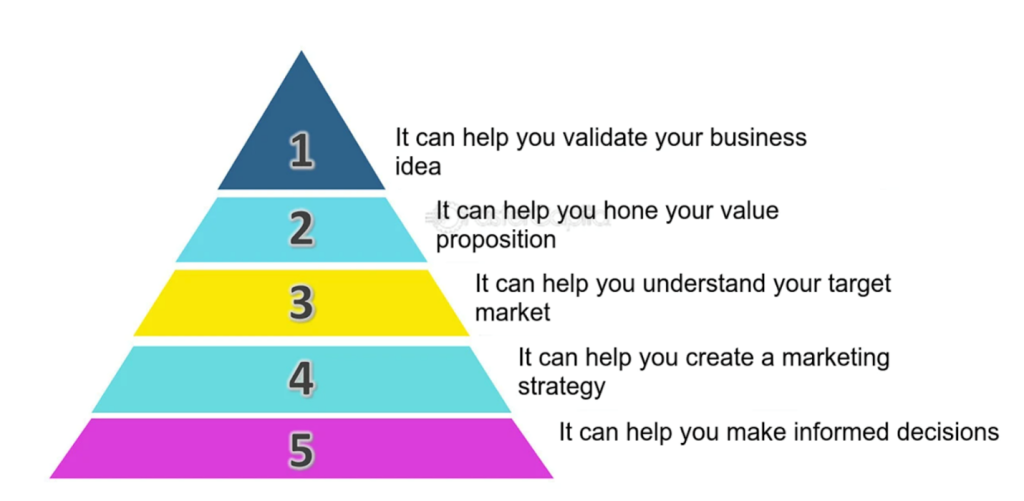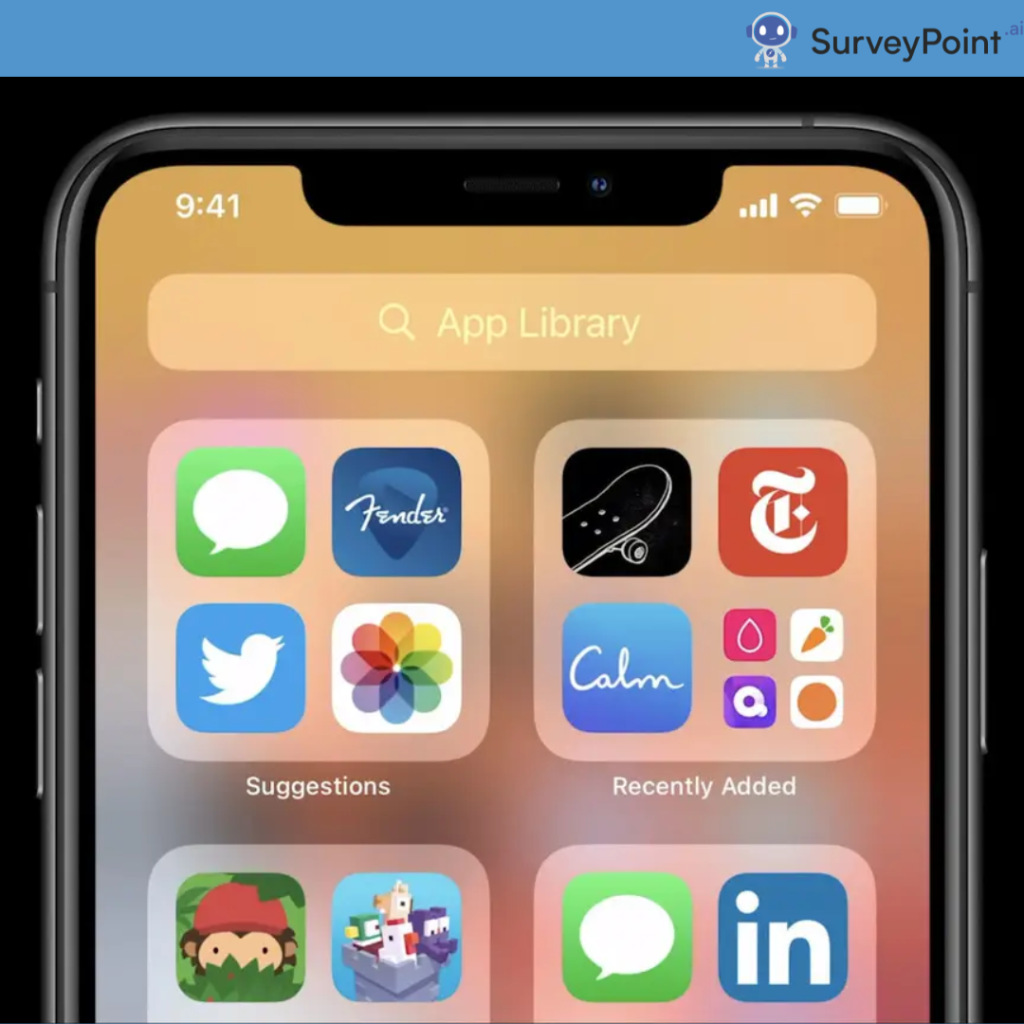
Do you remember when Google launched its innovative wearable technology called ‘Google Glass’ in 2013? However, the high price, privacy concerns, and social implications led to limited demand. Resulting in negative public perception.
Google discontinued the product in 2015. They failed to understand the market’s readiness and acceptance of such a product.
This example highlights the importance of comprehensive research before launching new technologies.
Marketing research isn’t just about data. It’s about uncovering stories and ideas that resonate with consumers.
What is Marketing Research?

Source: Oberlo
It involves collecting data directly from potential customers. This is done through surveys, product testing, focus groups, and other similar processes.
The primary purpose of research is to know the product or service and the market it is associated with. Further showing how the audience will react to it.
This information can be used for marketing & advertising strategies and business investments. The development of a new product or service requires extensive research and development (R&D).
Benefits of Marketing Research
Market Insights: Marketing research provides valuable insights into consumer behavior, preferences, and trends. Understanding the target audience and their needs helps businesses. We can also learn how to effectively communicate with and engage with them.
Targeted Marketing: It is important to create campaigns and messages that resonate with your target customers. This leads to higher response rates and conversion rates.
Strategic Decision-Making: Research enables businesses to identify market opportunities. We will know how to launch successful products or services and which market (city, location, shop, etc.) to target.
Customer Satisfaction: Businesses should target customer satisfaction and identify areas for improvement. By understanding preferences and expectations, companies can develop themselves to meet customer needs. Thus resulting in increased loyalty and repeat business.
Competitive Advantage: Having data from research helps businesses gain a competitive edge. This includes insights into their competitors’ strategies, strengths, and weaknesses. It allows companies to differentiate themselves.
Product Development: Research helps in identifying gaps in the market. What is something that a customer needs that we aren’t able to meet? Generating ideas for new product or service development ensures that businesses create offerings that align with customer demands. Leading to a higher likelihood of success in the market.
Risk Mitigation: By conducting research, businesses can lessen risks. These risks can be product or service launches, marketing campaigns, or expansions. Research provides valuable data-driven insights that reduce uncertainties, ultimately saving time and resources.

Successful Brand Examples of Marketing Research
Coca-Cola
One real-life brand example that utilizes the marketing research process is Coca-Cola. In order to stay relevant and adapt to changing consumer preferences, Coca-Cola did extensive market research. They conducted surveys to understand consumer preferences, tastes, and trends.
Using the research findings, Coca-Cola introduced new product variations like Coke Zero and Diet Coke. This was to cater to health-conscious consumers. They conducted taste tests and blind taste challenges to gather feedback. Ultimately, helping them refine their product offerings.
Nike
Another brand that employs the marketing research process is Nike. Nike consistently conducts research to understand customer needs and desires. They collect data on consumer preferences, athletic trends, and market demands.
Nike’s research-led approach helped them create popular product lines like Nike Air, Nike Flyknit, and Nike Dri-FIT. They also use customer feedback and data analysis to improve their online and offline shopping experiences. Resulting in a seamless and personalized customer journey.
Process of Marketing Research
Here are five steps that outline the process of marketing research:
- Defining the Objective: The first step is to clearly define the research objective. This involves identifying the specific problem or question that needs to be answered. For example, it could be understanding customer preferences for cotton pants during spring in London, UK.
- Designing the Research: In this step, the research methodology is developed. It includes determining the data collection methods, such as surveys, interviews, or observations.
The sample size and target audience are also identified. Additionally, a research plan is created, outlining timelines, resources, and a budget.
- Data Collection: This step involves gathering data based on the chosen methodology. Surveys may be conducted, interviews conducted, or existing data analyzed. This stage is crucial for obtaining relevant and accurate information.
- Analysis and Interpretation: Once the data is collected, it is analyzed to get meaningful insights. Statistical techniques, such as regression analysis or data mining, may be used to identify patterns and trends.
The findings are then interpreted in the context of the research objective.
- Reporting and Action: The final step involves presenting the research findings in a comprehensive report. The report highlights the key insights, recommendations, and actionable steps for the business.
It is essential to communicate the findings effectively to stakeholders. With this, businesses can make informed marketing decisions.
ALSO READ: 6 Common Potential Traps in Market Research
Types of Marketing Research
Marketing research involves gathering and analyzing data to gain insights into consumer behavior and market trends. There are five types:
- Exploratory Research: The aim here is to explore new ideas, identify problems, and gain a better understanding of a specific marketing issue. It involves conducting interviews, focus groups, and surveys to gather qualitative data.
- Descriptive Research: This research describes the characteristics and trends of a target market. It involves collecting quantitative data through surveys, observations, and secondary research. It helps marketers understand the current market scenario and consumer preferences.
- Causal Research: It investigates cause-and-effect relationships between variables. It aims to determine how changes in one variable impact another. It typically involves experiments and statistical analysis to establish causal relationships.
- Diagnostic Research: Delving into specific marketing problems or challenges is they key motive. It seeks to identify the root causes of issues and provide insights to develop effective solutions. Diagnostic research involves techniques such as data analysis, market testing, and in-depth interviews.
- Predictive Research: This research involves forecasting the future. Whether it is market trends, consumer behavior or demand patterns. To make informed predictions and assist strategic decision-making many techniques are there. For example, utilizing statistical models, trend analysis, and predictive modeling techniques.
ALSO READ: Know the Market Research Challenges with its Solutions
Wrapping Up
In summary, marketing research is a powerful tool that enables businesses to understand and navigate the ever-changing marketplace successfully.
It serves specific purposes, allowing marketers to gather valuable information and make data-driven decisions to meet consumer needs, drive innovation, and achieve marketing success.




